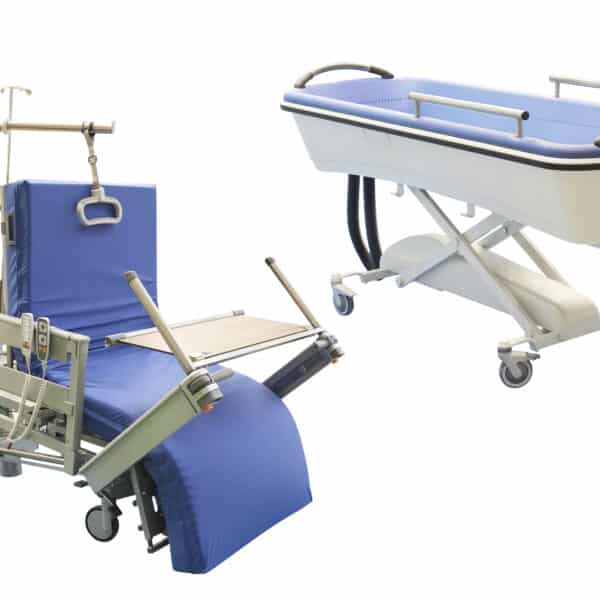
Conforming to UK legislation and European standards
The decision to buy a new or second-hand, pre-used piece of equipment must be made in an informed manner. The equipment to be purchased must have all legal documentation and conform to UK legislation and European standards. Equipment should have a CE marking and hold a certificate of conformity meeting all relevant requirements of all directives applicable to that product. The equipment must have an operating manual which details the schedule of maintenance and gives a detailed account of all safety features. The manual will outline how to operate the equipment in a safe manner. It might be safer to buy the equipment from a leading manufacturer and known brand in the UK than from an overseas unknown brand.
Legislation – equipment safety
The Provision and Use of Work Equipment Regulations (PUWER) place duties on employers who use machinery and equipment to ensure it is safe to use and has protective devices, such as guards and emergency stop buttons. Employers have a duty under section 11 of the PUWER Regulations to prevent employees’ access to the dangerous parts of a piece of equipment by having appropriate guards in place.
Safe system of work and risk assessment
Equipment must be used in a safe manner, and a safe system of work and risk assessment should be in place. The system and assessment should be recorded and communicated to all personnel using the equipment. The safe system of work and risk assessment will need to be specific to the use of the equipment and the activity being undertaken. An example of this is the use of a lifting sling. The use of the lifting sling may be different for each service user as each person will have unique medical issues to be considered. Areas to consider before lifting a service user include their ability to communicate, mobility issues, presence of different medical factors, weight, skin condition and limited sensory abilities. When conducting a risk assessment, all unique factors will need to be assessed before using the equipment.
Instruction, information and supervision
All personnel operating equipment must have suitable and sufficient instruction, information and supervision to use the equipment safely. A person classified as a ‘young worker’ may need to be supervised whilst using the equipment.
Maintenance of work equipment
All work equipment must be part of the maintenance schedule. The person carrying out the maintenance of the equipment must be competent (have appropriate knowledge, experience, training and qualifications) and have read and understood the safe operating manual. The maintenance schedule will include electrical and other mechanical testing depending on the equipment and what is required.
All portable appliances will need portable appliance testing (PAT) to ensure they remain electrically safe. The PAT testing will need to be scheduled depending on the type of equipment and frequency of use.
Monitoring and inspection
An audit programme outlining the frequency of planned inspections for all equipment should include all equipment within the business. The list may be part of the asset register of a business.
The user of the equipment must visually inspect all equipment before use. It is good practice to record the pre-use inspections of all equipment. The inspection sheet will be required if there is an investigation of an incident involving the equipment.
Near misses, incidents and dangerous occurrences
Management should ensure that all near misses, incidents and dangerous occurrences are recorded and investigated so as to understand the root cause and to prevent the incident occurring again.
If an incident is serious and is required to be reported to the HSE under the RIDDOR Regulations, having documented records of inspections will be supportive to the investigation. The detail required for any equipment involved in an incident could include:
- Safe system of work and risk assessment
- Records of inspection of the equipment
- Evidence of certificates of training for personnel using the equipment
- Records of pre-use checks by the operator of the equipment
- Electrical testing documentation
- Certificate of conformity
- CE marking details
- Any historic incidents involving the equipment
- Record of planned preventative maintenance of the equipment
Safety signs
There may be specific safety signs on equipment and in its vicinity.
Personal protective equipment
Personnel may need specific personal protective equipment (PPE) for the use of other equipment. The details will need to be recorded in the risk assessment and communicated to personnel.
Summary
In summary, the following steps are required when using equipment:
- Purchase from a reputable supplier
- Ensure it conforms to all UK legislation and European standards
- Ensure all documentation is in place, such as certificate of conformity meeting all relevant requirements of all directives applicable to that product
- Make sure equipment has a CE marking
- Ensure you have the operating manual
- Ensure that there is the appropriate guarding to protect personnel
- Ensure correct safety signs are in place to alert the operator to potential hazards
- Ensure personnel have appropriate personal protective equipment as required to operate specific equipment. This will be recorded in the risk assessment and operating manual
QCS Policies
QCS has guidance and policies for the management of equipment to support your service in meeting the requirements of health and safety.
References
HSE – Lifting Operations and Lifting Equipment Regulations 1998 (LOLER)
HSE – Provision and Use of Work Equipment Regulations 1998 (PUWER)
HSE – Essential Health and Safety Requirements (EHSRs) or the Machinery Directive



